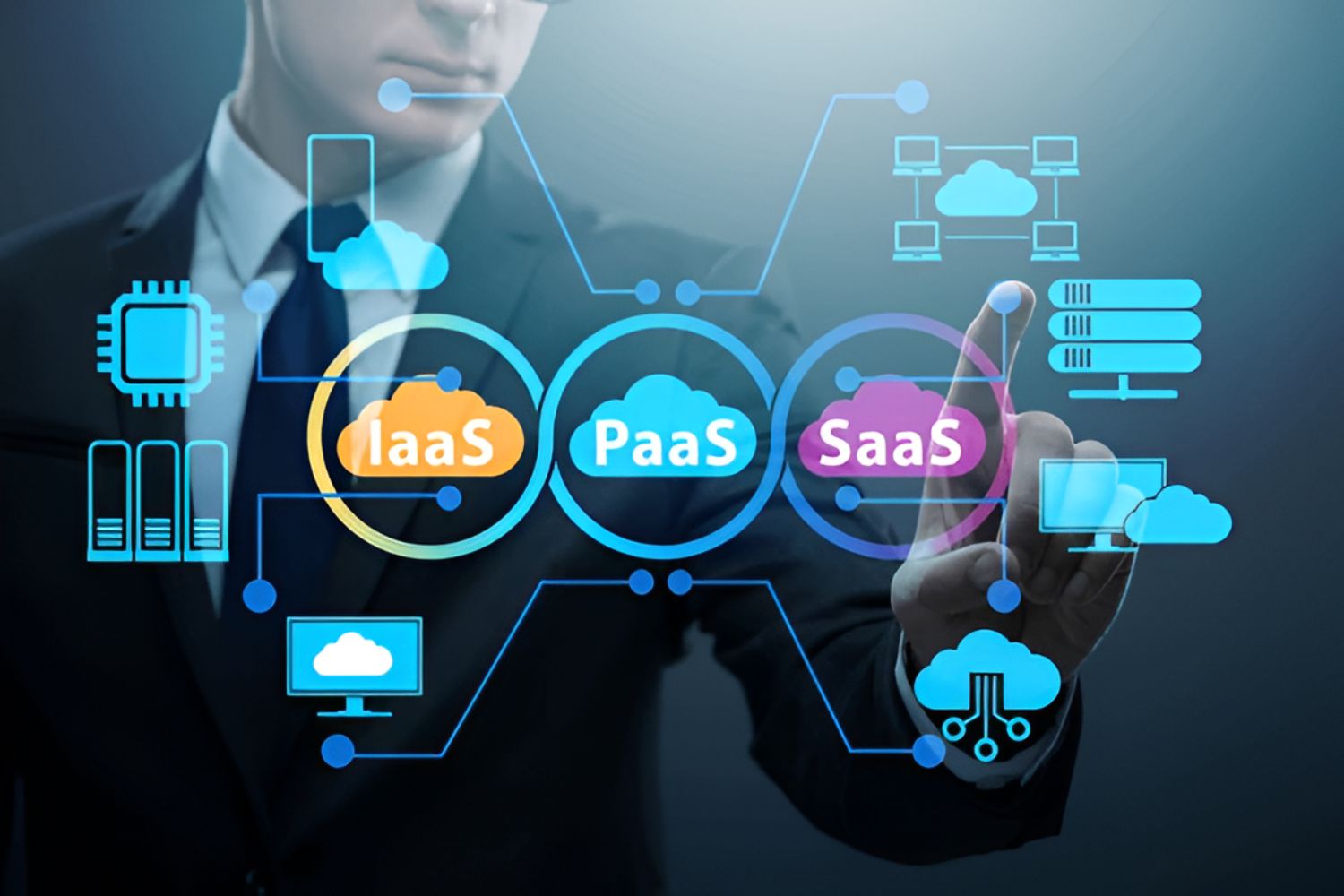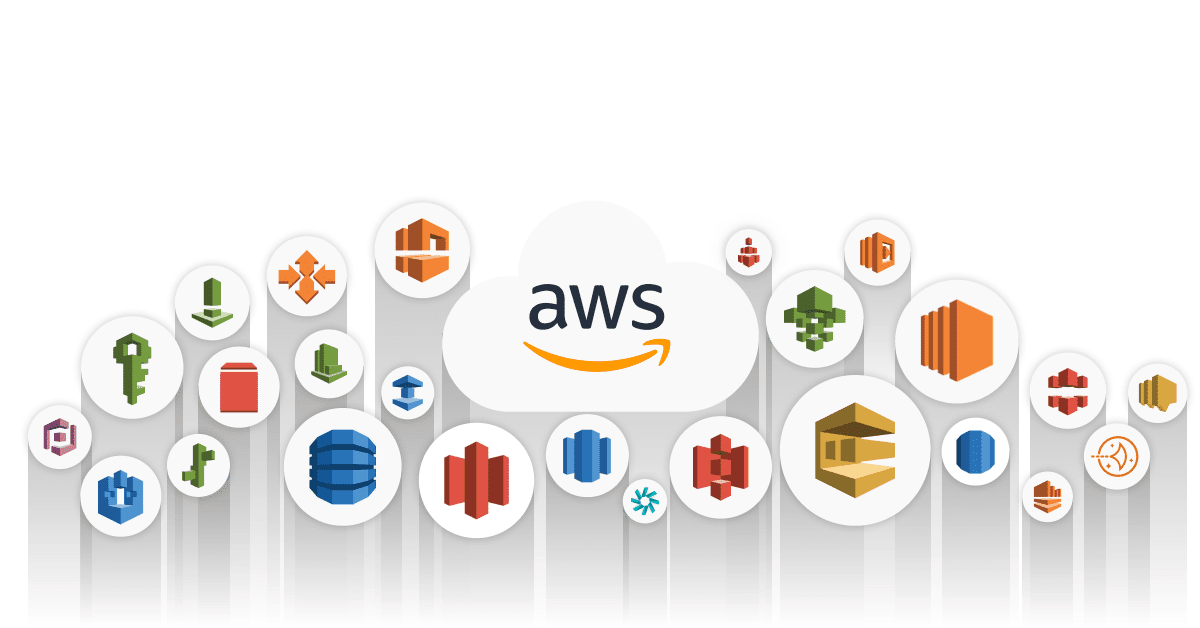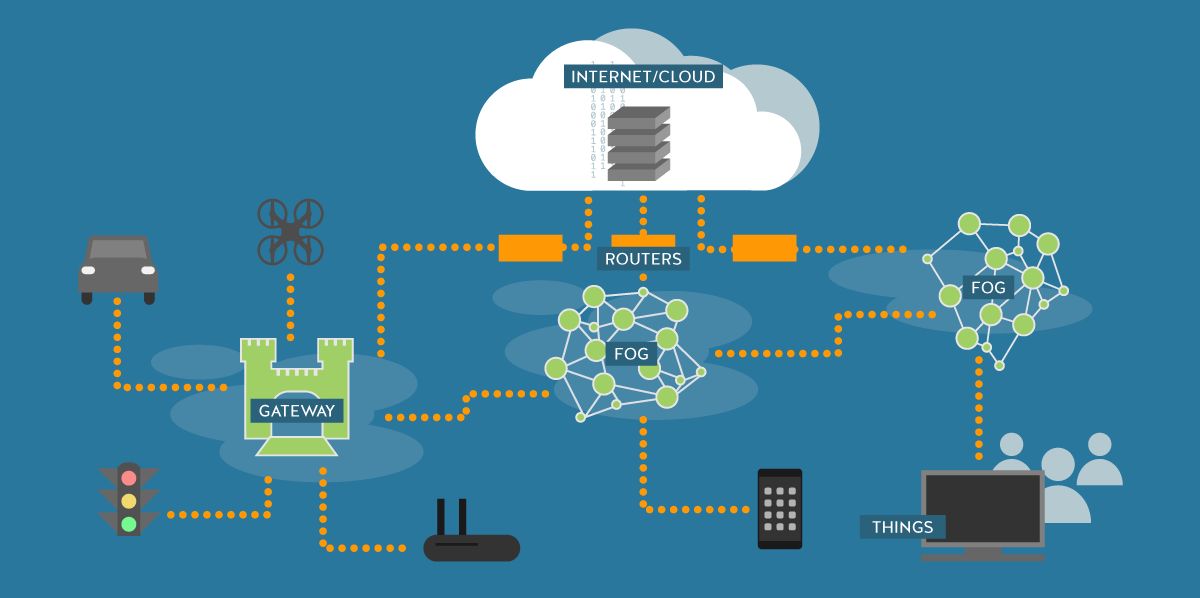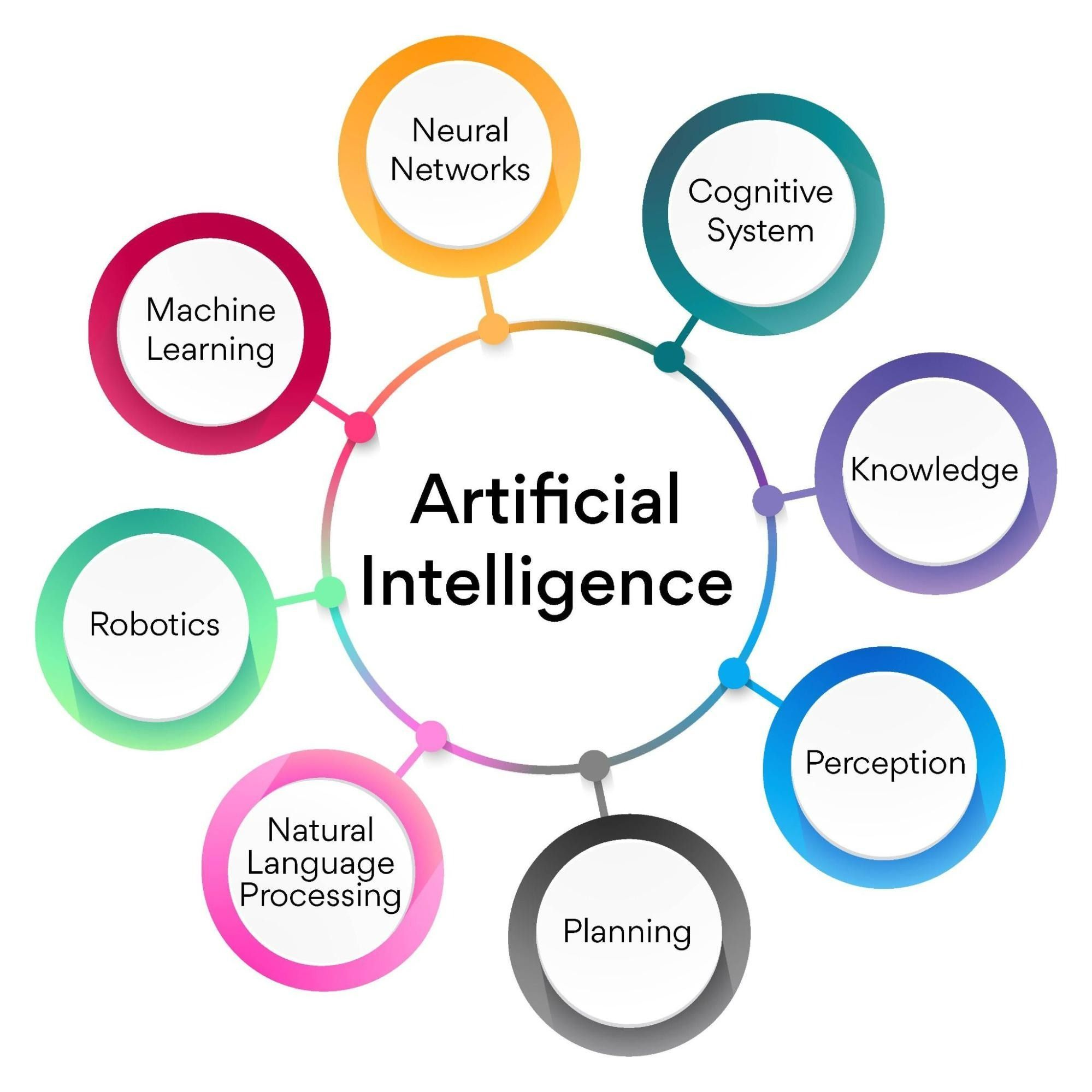Introduction
In today’s digital era, businesses are increasingly relying on cloud computing to optimize their operations and drive innovation. Cloud computing offers a flexible and scalable solution that allows organizations to access computing resources and software applications remotely over the internet. Within this cloud computing model, there are three primary service models: Infrastructure as a Service (IaaS), Platform as a Service (PaaS), and Software as a Service (SaaS).
IaaS, PaaS, and SaaS each offer distinct advantages and cater to different business needs. Understanding the differences between these service models is essential for organizations seeking to leverage cloud computing effectively and choose the right approach for their specific requirements.
In this article, we will delve into the details of IaaS, PaaS, and SaaS, exploring their functionalities, benefits, and how they differ from one another. Whether you are an IT professional looking to optimize your infrastructure or a business owner seeking software solutions, this article will help you make informed decisions regarding cloud services.
So, let’s dive in and explore the world of IaaS, PaaS, and SaaS, and discover how they can revolutionize the way you do business in the modern digital landscape.
IaaS (Infrastructure as a Service)
Infrastructure as a Service (IaaS) is a cloud computing service model that provides virtualized computing resources over the internet. With IaaS, businesses can leverage a virtual infrastructure that eliminates the need for physical on-premises hardware, such as servers, storage devices, and networking equipment.
Using IaaS, organizations can scale their infrastructure up or down based on their specific requirements, allowing for flexibility and cost-effectiveness. The cloud service provider manages the underlying infrastructure, including servers, storage, and networking components, while users have control over operating systems, applications, and data.
One of the primary advantages of IaaS is the ability to quickly and easily provision and deploy resources. Instead of investing in costly hardware and infrastructure, businesses can simply pay for the resources they need on a pay-as-you-go basis. This scalability not only reduces upfront costs but allows organizations to adapt to changing demands and growth opportunities seamlessly.
IaaS provides a high level of flexibility, enabling users to create customized environments and configurations based on their specific needs. It offers a wide range of services, including virtual machines, storage, load balancers, and network resources, to support various types of applications and workloads.
Another key benefit of IaaS is the increased level of security and reliability it offers. Cloud service providers invest heavily in security measures and infrastructure redundancy, ensuring that data is protected and available at all times. This allows organizations to focus on their core business activities, knowing that their infrastructure is being managed and maintained by experienced professionals.
Overall, IaaS is an ideal solution for businesses that require full control over their infrastructure while avoiding the costs and complexities associated with physical hardware. It offers scalability, flexibility, cost-effectiveness, and enhanced security, making it a popular choice for organizations of all sizes and industries.
PaaS (Platform as a Service)
Platform as a Service (PaaS) is a cloud computing service model that provides a platform for developers to build, deploy, and manage applications without the need to worry about underlying infrastructure. PaaS offers a complete development and deployment environment that includes operating systems, programming languages, middleware, and other tools required for application development.
With PaaS, developers can focus on writing code and creating innovative applications without the hassle of managing servers, networks, and databases. The cloud service provider takes care of the infrastructure, ensuring scalability, availability, and security.
PaaS offers a range of features and capabilities that simplify and accelerate application development. Developers can leverage pre-built components and frameworks to streamline the development process and maximize productivity. PaaS also provides automatic scaling and load balancing, allowing applications to handle fluctuating demands without disruption.
One of the key advantages of PaaS is the ability to collaborate and work in a team environment. Developers can work together on projects, share code, and implement version control, facilitating efficient collaboration and enhancing productivity. PaaS platforms also support integration with other services, such as databases, messaging systems, and analytics tools, enabling developers to build powerful and interconnected applications.
PaaS offers a cost-effective approach to application development and deployment. Rather than investing in and managing infrastructure, organizations pay for the PaaS service on a subscription basis. This eliminates the need for upfront hardware and software costs and reduces operational complexities. Additionally, PaaS provides automatic updates, ensuring that applications are always running on the latest software versions and benefiting from enhanced security and performance.
Overall, PaaS empowers developers to focus on what they do best – building innovative applications – by abstracting away the complexities of infrastructure management. It offers a collaborative and efficient development environment, automatic scaling, cost-effectiveness, and seamless integration with other services. PaaS is particularly well-suited for development teams and organizations seeking agility, speed, and reduced time to market.
SaaS (Software as a Service)
Software as a Service (SaaS) is a cloud computing service model that delivers software applications over the internet on a subscription basis. With SaaS, users can access and use software applications without the need for installation or management on their local devices. The software is hosted and maintained by the cloud service provider, who ensures availability, updates, and security.
SaaS offers a wide range of applications, catering to diverse business needs, including customer relationship management (CRM), enterprise resource planning (ERP), project management, collaboration tools, and more. Users can access these applications from any device with an internet connection, making them highly accessible and flexible.
One of the key advantages of SaaS is its ease of use and simplicity. Users can get started quickly with the software, as there is no need for complex installations or configurations. The software is typically web-based and can be accessed through a browser, making it convenient and user-friendly.
SaaS applications are continuously updated and upgraded by the cloud service provider. Users benefit from automatic updates that ensure they are always using the latest version of the software, without needing to perform any manual updates. This ensures that users have access to new features, bug fixes, and security patches without any additional effort.
SaaS also offers a significant cost advantage for organizations. Instead of purchasing and maintaining software licenses, users pay a subscription fee based on their usage. This subscription-based pricing model eliminates upfront costs and allows businesses to budget more effectively. It also provides scalability, as users can easily add or remove licenses as needed, aligning costs with actual utilization.
Furthermore, SaaS offers enhanced collaboration capabilities. Multiple users can access and work on the same software application simultaneously, enabling real-time collaboration and improving productivity. Sharing and exchanging data becomes seamless, and teams can work together irrespective of their geographic locations.
Overall, SaaS provides organizations with access to powerful software applications without the need for infrastructure management or software installation. It offers ease of use, automatic updates, cost-effectiveness, and collaborative capabilities. SaaS is an excellent choice for businesses that require flexibility, mobility, and the ability to quickly and easily deploy and use software applications.
Key Differences between IaaS, PaaS, and SaaS
While IaaS, PaaS, and SaaS are all cloud computing service models, there are key differences between them in terms of functionality, management, and user responsibilities. Understanding these differences is crucial in selecting the right approach for specific business needs. Let’s explore the distinctions:
Infrastructure: IaaS provides the foundational infrastructure components, such as servers, storage, and networking, allowing users to manage the operating systems, applications, and data. PaaS offers a development and deployment platform, including operating systems, programming languages, and middleware. SaaS delivers ready-to-use software applications without requiring installation or management.
Responsibilities: With IaaS, users have the most control over their infrastructure, including aspects like server configurations and security. In PaaS, the cloud service provider manages the underlying infrastructure, while users focus on application development. In SaaS, the provider takes care of the entire stack, including infrastructure, maintenance, and security, relieving users of all management responsibilities.
Scalability: All three models offer scalability, but with varying degrees of control. IaaS allows users to scale their infrastructure up or down based on demand. PaaS provides automatic scaling and load balancing capabilities to handle application demands seamlessly. SaaS applications are inherently designed to scale and support multiple users, but users have limited control over the infrastructure scaling process.
Customizability: IaaS offers the highest level of customization, as users have full control over the infrastructure and can configure it to their specific needs. PaaS allows customization within the provided platform, such as choosing programming languages and frameworks. SaaS has limited customization options, as the software applications are pre-configured by the provider.
Development: IaaS does not have a direct focus on application development but provides an environment for running applications. PaaS is specifically designed for developers, offering tooling, pre-built components, and frameworks to simplify the development process. SaaS applications are fully developed, and users simply access and use them without any development involvement.
Cost Structure: IaaS generally follows a pay-as-you-go model, where users pay for the infrastructure resources consumed. PaaS often employs a similar payment structure, but also considers the number of users and applications. SaaS is typically subscription-based, with users paying for access to the software applications on a recurring basis.
These key differences highlight the varying levels of control, responsibility, and customization offered by IaaS, PaaS, and SaaS. Choosing the appropriate model depends on the specific requirements of the organization, the level of flexibility and customization needed, and the desire to manage infrastructure and development internally.
Benefits of IaaS, PaaS, and SaaS
The three cloud computing service models, IaaS, PaaS, and SaaS, each offer unique advantages that cater to different business needs. Understanding the benefits of each model can help organizations make informed decisions when adopting cloud solutions. Let’s explore the benefits of IaaS, PaaS, and SaaS:
IaaS (Infrastructure as a Service)
1. Scalability: IaaS enables organizations to scale their infrastructure resources up or down based on demand. This flexibility allows businesses to handle periods of high traffic or increased workloads without investing in costly hardware upfront.
2. Cost-Effectiveness: With IaaS, businesses only pay for the infrastructure resources they consume, eliminating the need for upfront capital expenditure. This cost structure helps organizations optimize their IT budgets and allocate resources more effectively.
3. Control and Customization: IaaS gives users full control over their infrastructure, allowing them to customize and configure it according to their specific needs. This level of control is beneficial for businesses that require highly customized environments or have specific security and compliance requirements.
4. Security: IaaS providers place a strong focus on security measures and infrastructure redundancy, ensuring that data is protected and available at all times. This enhanced level of security helps businesses mitigate potential risks and threats.
5. Disaster Recovery: IaaS offers built-in disaster recovery capabilities, providing organizations with the ability to replicate and back up their data and applications across multiple geographical locations. This ensures business continuity in the event of a disaster or system failure.
PaaS (Platform as a Service)
1. Streamlined Development: PaaS provides a complete development and deployment environment, offering pre-built components, frameworks, and tools that accelerate the application development process. This streamlines development efforts, reduces time to market, and enables teams to focus on building innovative applications.
2. Collaboration: PaaS platforms promote collaboration among developers by providing features such as version control, integrated development environments, and tools for sharing code. This fosters efficient teamwork and enhances productivity within development teams.
3. Scalability and Performance: PaaS automatically scales applications based on demand, ensuring optimal performance during periods of peak usage. This scalability eliminates the need for developers to worry about provisioning and managing resources, allowing them to focus on writing code.
4. Cost Optimization: PaaS follows a pay-as-you-go model, allowing businesses to pay for the platform and services they use. This cost structure eliminates the need for upfront investments in hardware and software, making it an affordable option for businesses of all sizes.
5. Automatic Updates and Maintenance: PaaS providers take care of software updates, security patches, and infrastructure maintenance. This ensures that applications are always running on the latest versions with enhanced security and performance, freeing up developers from manual maintenance tasks.
SaaS (Software as a Service)
1. Easy Access and User-Friendly Interface: SaaS applications are easily accessible through browsers, making them available from anywhere with an internet connection. The user-friendly interfaces of SaaS applications require minimal training, ensuring a smooth onboarding experience.
2. Rapid Deployment: With SaaS, there is no need for installation or complex configurations. Users can quickly start using the software applications, reducing deployment time and enabling faster implementation of new tools or processes.
3. Cost Savings: SaaS follows a subscription-based model, eliminating the need for upfront software purchases and reducing costs associated with maintenance and updates. Organizations can allocate their budgets more efficiently and scale their software usage based on their needs.
4. Automatic Updates and Upgrades: SaaS providers handle all software updates and upgrades, ensuring that users have access to the latest features and security enhancements without any additional effort. This eliminates the need for manual updates and ensures that users have the best possible experience.
5. Scalability and Flexibility: SaaS applications are designed to scale and support multiple users simultaneously, making them highly flexible. Businesses can easily add or remove users as needed, allowing them to align costs with actual utilization.
These benefits illustrate why businesses are increasingly adopting cloud computing service models such as IaaS, PaaS, and SaaS. The specific advantages depend on the unique requirements and goals of each organization, making it important to evaluate these benefits in relation to the desired outcomes and resources available.
Common Examples of IaaS, PaaS, and SaaS
Now that we have explored the benefits and distinctions of IaaS, PaaS, and SaaS, let’s take a look at some common examples of each cloud computing service model:
IaaS (Infrastructure as a Service)
1. Amazon Web Services (AWS): AWS is a leading provider of IaaS, offering a wide range of infrastructure services, including virtual machines, storage, databases, and networking components. Users have full control over their virtual servers and can scale resources as needed.
2. Microsoft Azure: Azure is another popular IaaS platform that provides virtual infrastructure, allowing businesses to deploy and manage virtual machines, storage, and networking resources. It offers a wide range of services to support various workloads and application needs.
3. Google Cloud Platform (GCP): GCP offers IaaS capabilities, enabling users to provision virtual machines, store and retrieve data, and build scalable network infrastructures. GCP emphasizes ease of use and scalability, making it an attractive choice for businesses.
PaaS (Platform as a Service)
1. Heroku: Heroku is a PaaS platform that simplifies application deployment and management. It supports multiple programming languages and provides a range of tools to streamline the development process. Heroku enables developers to focus on writing code and deploying applications without worrying about infrastructure.
2. OpenShift: OpenShift is a container application platform that offers PaaS functionalities. It allows developers to build, deploy, and manage applications using different technologies, such as Kubernetes and Docker. OpenShift provides an integrated development environment and automates many tasks related to application deployment and scaling.
3. Salesforce Platform: Salesforce Platform is a PaaS offering specifically designed for building and customizing Salesforce applications. It provides developers with tools and resources to create extensions, integrate with external systems, and build custom workflows within the Salesforce ecosystem.
SaaS (Software as a Service)
1. Salesforce: Salesforce is a widely used CRM platform that provides businesses with a range of customer-focused applications, including sales, service, and marketing automation. Users can access these applications through a web browser, eliminating the need for installation or maintenance.
2. Microsoft 365: Microsoft 365 is a comprehensive suite of SaaS applications that includes productivity tools such as Word, Excel, PowerPoint, and collaboration platforms like SharePoint and Teams. Users can create, edit, and share documents online, promoting seamless collaboration and productivity.
3. Google Workspace: Formerly known as G Suite, Google Workspace is a collection of web-based productivity tools, including Gmail, Google Docs, Google Sheets, and Google Drive. These applications allow users to create, edit, and collaborate on documents, spreadsheets, and presentations online.
These examples represent just a fraction of the numerous IaaS, PaaS, and SaaS offerings available in the market. It is important to evaluate the features, pricing, and suitability of each service for specific business requirements to make informed decisions when choosing cloud computing solutions.
Choosing the Right Model for Your Business Needs
When considering cloud computing services, it’s important to evaluate your business needs and requirements to determine which service model, whether IaaS, PaaS, or SaaS, is the most appropriate choice for your organization. Here are some factors to consider when making this decision:
Infrastructure Control: If you require complete control over your infrastructure, including server configurations and security measures, then IaaS would be the most suitable option. With IaaS, you have the flexibility to customize and manage the infrastructure according to your specific needs.
Development Capabilities: If your primary focus is application development and you have a team of developers who require a streamlined development and deployment environment, then PaaS would be ideal. PaaS provides pre-built components, frameworks, and tools that simplify the development process and enhance collaboration among developers.
Software Applications: If you need ready-to-use software applications without the need for installation or management, then SaaS is the right choice. SaaS offers instant access to applications that are hosted and maintained by the service provider. This is particularly beneficial for non-technical users or businesses looking for specific software solutions.
Scalability: If your organization experiences fluctuating demands and requires the ability to scale resources up or down based on demand, both IaaS and PaaS are suitable options. IaaS allows you to scale your infrastructure resources, while PaaS offers automatic scaling capabilities for applications deployed on the platform.
Cost Considerations: To optimize cost efficiency, it’s important to consider your budget and cost structure preferences. IaaS and PaaS typically follow a pay-as-you-go model, providing flexibility and cost control. SaaS, on the other hand, follows a subscription-based model, allowing businesses to budget their software costs on a recurring basis.
Technical Expertise: Consider the level of technical expertise available within your organization. While IaaS provides the most control and customization, it also requires a higher level of technical knowledge. PaaS abstracts the infrastructure complexities, but still requires development skills. SaaS, on the other hand, is user-friendly and accessible to a wider range of users, regardless of technical expertise.
It’s important to thoroughly evaluate these factors and align them with your business objectives, resources, and capabilities. It may also be beneficial to consult with cloud service providers or technology experts to get more insights and guidance in choosing the right model for your specific business needs.
Conclusion
Choosing the right cloud computing service model, whether IaaS, PaaS, or SaaS, is crucial for organizations seeking to leverage the benefits of cloud technology. Each model offers unique capabilities and advantages that cater to different business needs.
IaaS provides businesses with the flexibility and control to manage their infrastructure, allowing for scalability, cost-effectiveness, and customization. PaaS streamlines application development, promotes collaboration among developers, and offers automatic scaling capabilities. SaaS delivers ready-to-use software applications, eliminating the need for installation or management and providing ease of access and cost savings.
When making a decision, it is essential to consider factors such as infrastructure control, development requirements, scalability needs, cost considerations, and technical expertise. Assessing these factors in relation to your specific business objectives will help you choose the most suitable service model.
Remember, there is no one-size-fits-all approach, and organizations may find that a combination of service models or a hybrid cloud environment is the best fit for their unique needs. The key is to align the chosen service model with the overall business strategy and goals, enabling organizations to leverage cloud computing to its fullest potential.
By understanding the distinctions and benefits of IaaS, PaaS, and SaaS, organizations can harness the power of cloud computing to drive innovation, enhance productivity, and achieve scalability in today’s dynamic digital landscape.
So, carefully evaluate your business requirements, consult with experts, and embark on a cloud computing journey that enables your organization to thrive in the modern era.

























